Huussi: Lavatories and sanitation throughout history
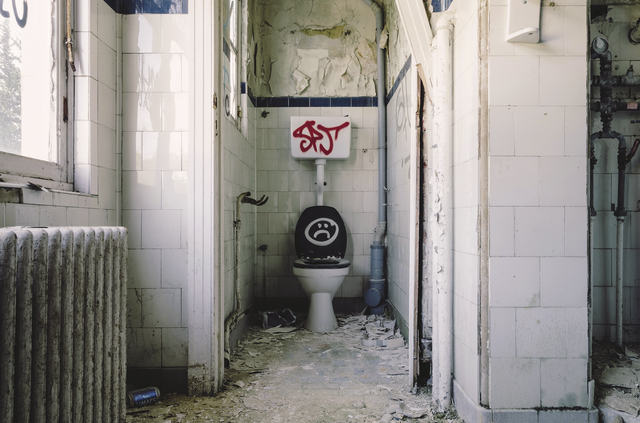
Gabor Monori, source Unsplash
There is evidence of systems where water was used to flush away toilet waste already in ancient Mesopotamia, but the flushing toilet similar to today gained ground only in the 1800s. A higher level of hygiene saved lives, but does the water- and nutrient-wasting sanitation system serve the well-being of our overpopulated planet anymore? Architect Eero Renell delved into the history of sanitation in preparation for the Huussi exhibition presented in the Pavilion of Finland.
Dry toilets and water closets have a shared history, and there is no clear division between them in the history of sanitation. The water closet, WC, has become a standard of the Western way of life and today stands as a desirable global metric of development. What has led to this and why? This article is a short introduction to the history of sanitation and related policy.
Creating the Western standard
In human history, civilisations have repeated the same pattern of evolution for millennia: When a civilisation reaches urbanisation, the management of human excrement becomes a prerequisite for liveable cities. We can also see history repeating itself in how sanitation solutions are forgotten and reinvented over the centuries in different parts of the world. Our generation may easily view the history of sanitation as a straight line that ends in the modern water closet system. However, the development of the modern Western flush toilet has taken a long and winding path.
Historical periods
The earliest archaeological evidence of lavatories has been found in Skara Brae in Scotland (ca. 2800 BCE, Stone Age), Mohenjo-Daro of the Indus Valley Civilisation (ca. 2500 BCE, Bronze Age), and the Middle East (ca. 3200 BCE, Uruk Period). It is safe to say that even the earliest urbanised cultures had systematic ways of managing human excrement. It could even be said that the management of human excrement has played a greater role in humanity’s development than drinking water systems.
The Indus Valley and Mesopotamia
Some 4,500 years ago, the Assyrian and the Babylonian empires in Mesopotamia, as well as some of their predecessor states, had advanced water and sewage systems. Evidence of systems where water was used to flush away toilet waste into brick-lined sewers has been found in their cities.
From the era around 2500 BCE, the Indus Valley Culture’s fortified city of Mohenjo-Daro also had an astonishingly advanced lavatory system. The seats were made of masonry and connected to either a cesspit or an advanced system of clay pipes ending in a waterway. Research has shown that even the inclination of the pipes was systematically optimised. Apparently, the city’s lavatory system extended to all residences, meaning it was not a privilege of the elite.
Mohenjo-Daro also shows signs that the dangers of mixing drinking water and sewage were already understood on some level. The pre-urban nomadic people (who also coexisted with urban culture) and farmers had plenty of living space and mainly relied on moving from place to place for survival. In addition to defaecating in nature, it is likely that temporary shelters were built to serve as lavatories, but no such archaeological discoveries have been made. It can be reasoned that the advanced sanitation systems built in urban, close-quarters societies have a partially unknown history of evolution.
Crete
Research has shown that the Minoan culture mastered pressurised water. Evidence of fountains and water-flushed toilets has been discovered at the palace of Knossos (1700–1400 BCE). Plenty of rain, water collected from roofs, and advanced systems kept the palace clean and effectively removed waste. The lavatories also had evidence of wooden lids, which may have been used to seal the seat against odours.
The sewer systems were mainly made of clay brick pipes. The cylindrical pipes were joined by masonry. In addition to sewers, the clay brick systems were also used for subsurface drainage.
Greece and Egypt
The highly developed Minoan sanitation culture did not make the transition to classical Greece (510–404 BCE). Despite waste handling of some kind, Athens appears to have been a dirty city that took some time to develop organised waste management. No archaeological evidence of public lavatories has been discovered in Athens, even though a rich life outside the home can be considered part of classical Greek culture. The Athenians improved their systems little by little, reaching a level of waste management where waste was processed using centralised sewers and cesspits. Towards the start of the Common Era, the civilisation’s development and population growth finally led to a high level of sanitation and greater cleanliness in Athens.
Egyptian lavatories were based on containers. Pots and chests were placed under toilet holes to collect faeces. To control the smell, special systems were used to pour or spill sand on the contents. The containers were emptied regularly. Ancient Egyptians were no strangers to sewers either, but for some reason, their sewers did not extend to the lavatory system.
The Egyptian system of containers and an absorbent of sorts can be considered a type of dry toilet.
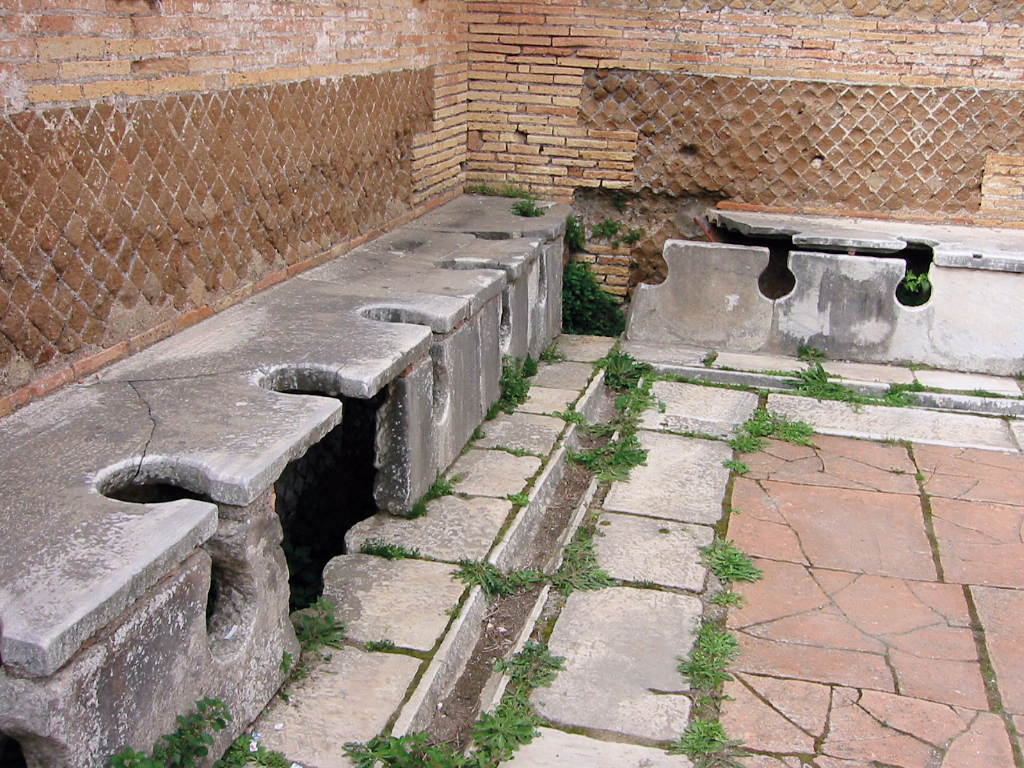
Rome
In the heyday of the Roman Empire in the early Common Era, Rome had up to 1.5 million residents. Its population density was over 100,000 residents per square kilometre, which is much more than any megalopolis of our time – three times that of Manhattan, for example. At a minimum, the city must have produced human waste to the tune of 100 cubic metres per square kilometre. As the city grew, complex systems were developed to manage and recycle the enormous volume of waste. These systems were used not only for sewage, but also to drain and dry the city’s marshes. The sewer system was not comprehensive, and the city’s level of hygiene could be terrible, especially in the poorer districts.
The amount of waste led to a certain kind of resource wisdom: The value of ammonia contained in urea was recognised, and it was used as a cleaner (soap had yet to be discovered) and to tan and colour hides. In essence, it was assigned a value and also taxed. It should be noted that faeces and urine were separated as much as possible. Urine was collected in pots, which were also available in public places. Faeces was collected in tubs that were emptied by paid specialised workers who then sold the contents as fertiliser in the surrounding countryside.
Despite systematic attempts, lavatory systems were only constructed in some areas and available to some residents. The majority of faeces was still disposed of in the small hours by tossing them onto the street from buildings up to eight floors high, with the faeces eventually finding its way into the city’s overworked sewer systems.
The class divide was steep in the city of Rome. The commoners living in extreme poverty were contrasted by the patricians who also developed a court culture of sorts for lavatory etiquette. An extensive system of public lavatories developed alongside private ones, topped by luxury latrines. These were large facilities that represented cleanliness, light, and high architecture. People came to the latrines to spend time and sit side-by-side in rooms with up to 75 seats. Visiting them was a privilege and likely an indication of the visitor’s class status.
The upper classes spending time in latrines can be linked to spa culture, one form of entertainment and spending time that forms a logical cycle with overindulgence and defaecation, akin to a rite.
The Middle Ages of Central Europe
The fall of the Roman Empire contributed to the decline of urban culture. This extended to lavatory and sewer systems, as technical progress halted and knowledge of existing systems like flushing lavatories was lost. The technical development of lavatories mostly continued in monasteries. The Middle Ages have been described as a filthy period, but in practice, European cities had small populations compared to ancient Rome, for example, and sanitation did not become an uncontrollable problem like it had been for the city of Rome.
The attitude towards faeces and defaecation was pragmatic, both in the cities and the countryside Cities had lavatories, both public and private, that sent their waste to cesspits, open ditches, or depressions. The streets and marketplaces had dung heaps where both human and animal excrement was collected. The rural population, accounting for over 90 per cent of Europeans in the Middle Ages, and a large number of poor city residents would relieve themselves on the spot without shame – on street corners and in bushes or the edges of fields in the countryside, serving as direct fertilisation. The excrement from cities was also used as fertiliser, of course, but the logistics were inconsistent and the emptying of cesspits and dung piles was postponed, making the filth and constant smells more obvious. During rain, unpaved streets would turn into an almost impassable sea of muck.
The theory of miasma, “noxious air”, hails back to the ancient times, but it also influenced the objectives for hygiene in mediaeval cities. Smells were tolerated in everyday life, but during and after excrement-related epidemics, clear spikes in miasma awareness could be seen, and odour nuisances resulted in ordinances to improve conditions.
It has been proven that in the Middle Ages, public discussion focused on the harmfulness of smells in particular, and it was therefore known that the unmanaged handling of human excrement was a problem.

The Byzantine Empire and the Caliphate
The decline and halt of progress mostly occurred in the former Western Roman Empire, now medieval Europe. The heritage of Roman culture remained and developed in the Byzantine Empire, or the Eastern Roman Empire, and later in the Islamic culture environment of the Mediterranean. No evidence of water closet systems have been discovered in medieval European castles while the famous Moorish palace and fortress of Alhambra had refined lavatories lined with glazed tiles and connected to sewer systems.
Early modern period
The water closet is a prehistoric invention, as even the earliest urban cultures used water to flush away excrement. Because of the decline of urban culture, the Middle Ages can be seen as a decline in sanitation as well. The start of a new age introduced many changes. People’s world view broadened, they could obtain information easier, and the Reformation transformed society.
Even so, looking after personal hygiene was still seen as unnecessary for a long time. The connection between hygiene and health was not understood, and the approach to defaecation and faeces was pragmatic. A good example is the Palace of Versailles, an absolute masterpiece and paragon of grandeur and magnificence from the turn of the 18th century that included no advanced lavatories whatsoever. Smells were a considerable nuisance according to contemporary sources, and considering the palace’s fountains and advanced waterworks and channel systems, sewers and water closets could have easily been built.
The culture of the court at Versailles is also an interesting example of seeing bodily functions as natural, even considering them a public event. The king’s power made him the stage of society: whatever he did would be public to at least the court of about a hundred people. This also extended to defaecation as the court kept a sharp eye on the king’s toilet time, his manners becoming the ideal model for all layers of society. There were no taboos about the matter, and no embarrassment was felt for doing one’s business in public. Women and men of noble birth would answer the call of nature behind the scant protection of the palace’s curtains.
The advent of the modern flush toilet
Italy was ravaged by devastating plague epidemics towards the end of the 15th century. The ideal city imagined by Leonardo da Vinci included – at least in its utopian form – a plan for improving hygiene by using advanced lavatory and sewer systems. Da Vinci had understood the connection between hygiene and mortality after a plague epidemic and was using his inventions to improve the situation. The lavatory concept he developed at the end of the 15th century included ventilation and drains, and it may be considered the first modern update that led to our current flush toilet standard.
Sir John Harington, an English courtier to Elizabeth I, commissioned a grand manor in the countryside of Kelston in England based on the drawings of Barozzi di Vignola, an Italian architect. Of particular interest is that this building would include the first flush toilet that can be considered to be of modern design. It is unclear whether Barozzi or Sir John had the idea, but the important thing for the history of sanitation is that Harington promoted it and wrote a book about it. Queen Elizabeth I also became interested, and another flush toilet was built at her palace according to Harington’s instructions. However, the invention fell into oblivion, possibly for being too complex, expensive, and unreliable.
It was only in 1775 that the Scottish watchmaker Alexander Cumming began to improve upon Harington’s idea with a metal closing device that controlled the smells and allowed the toilet to be installed comfortably in living spaces. The English invention took over the world in the 19th century: toilet seats were exported to everywhere in Europe, China, Japan, and the United States of America.
Numerous water closets of various designs were developed in the 18th and 19th centuries, mostly in England and the United States, and the siphonic toilet from 1890 is still the dominant toilet system worldwide.
Nearly all the systems were based on flushing away faeces with water. There was one exception in the late 19th century: the earth closet system.
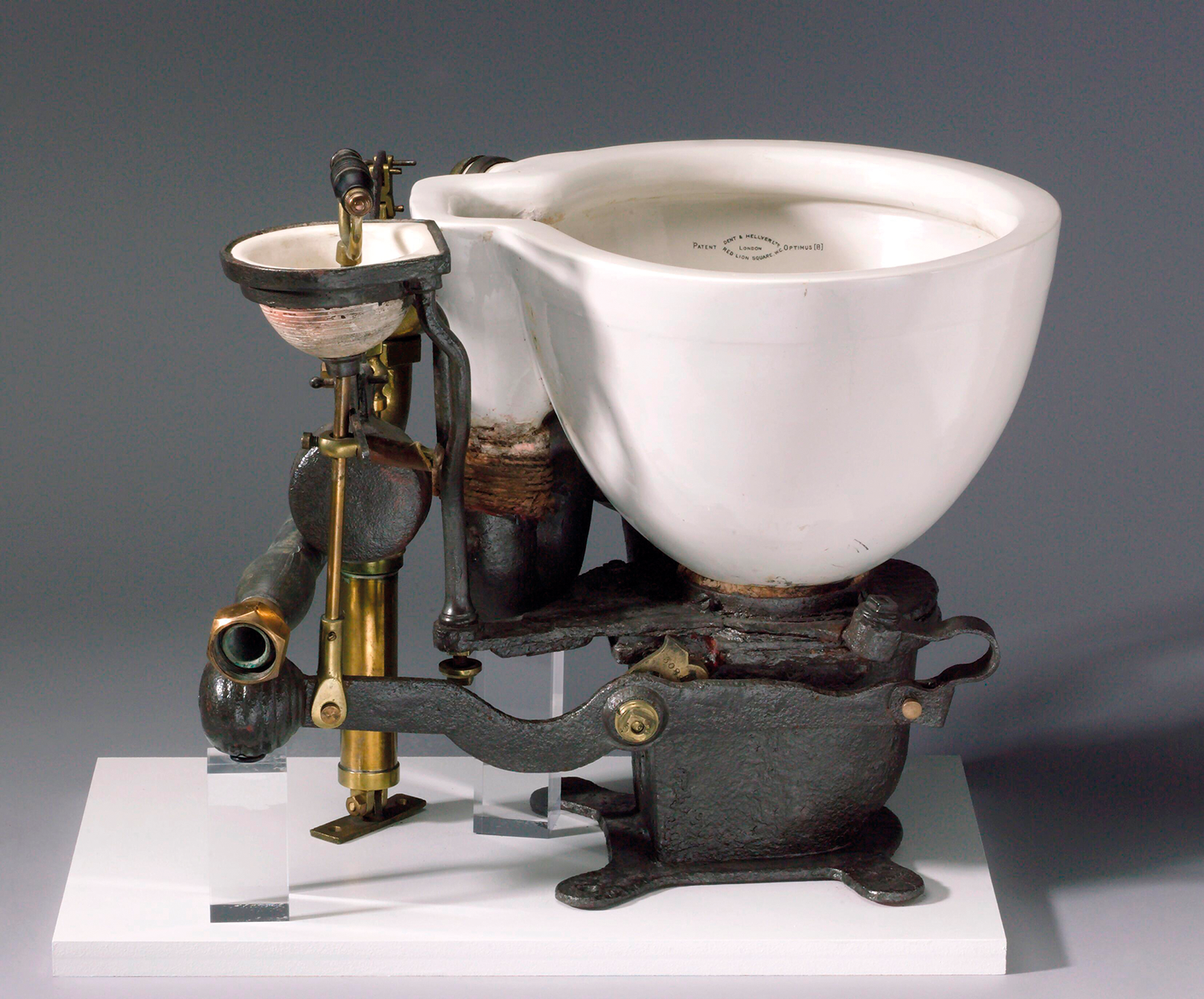
Earth closets – a brief period of composting dry toilets
Even though water supply and sewerage developed feverishly in the early 19th century, particularly in England, building residential plumbing was not easy or a matter of course. A marginal but still liked alternative was the earth closet, based on the principle of a composting dry toilet. In 1860, the English priest Henry Moule patented his composting dry toilet system and campaigned for it, highlighting the production of valuable fertiliser from toilet waste as a great advantage of the composting toilet.
George Edwin Waring Jr, an American, published a hundred-page scientific and technological review of earth closets and their benefits and technology in 1870. While the water closet already widely dominated residential and infrastructure planning, Waring’s work was perhaps one of the first and most extensive reviews of alternative systems.
Waring was also aware of the status given to the water closet, which still governs our thinking in light of the development of sanitation in non-industrialised countries.
The water-closet is the chief thing of which women living in the country envy their city cousins the possession. In country-houses, one of the first steps toward elegance is the erection of an expensive water-closet in the house, provided with a force-pump that is doomed to break both the back and the temper of the hired man; a tank and pipes which are pretty sure to be burst by frost every winter; the annual tax of the plumber’s bill; and, worse than all, a receptacle in the garden known as a ‘cess-pool,’ which usually has a private subterranean communication with the well from which drinking water is taken.
– Waring in Earth-closets and Earth Sewage (1870).
Earth closets probably had more supporters. Support was drummed up through the benefits of fertiliser yield and water savings. These were perhaps more questions of finance than resource conservation, but parts of the resulting conversation were equivalent to today’s discourse.
The earth closet system is making friends daily. The superior convenience of water closets still keep them in favour in cities having general water service, and it is not likely that earth closets will very soon supplant the wasteful unhealthy system of pouring into our rivers the sewage of large towns; but in rural districts, where water closets are impracticable, the earth closet has proved, and is still proving, a most serviceable invention. Aside from its freedom from effluvia, it serves, in a convenient form, for application as an unequalled fertiliser. Let those who have any doubts as to the superior quality deodorised night soil as a manure, mix it into a compost with grass, sods, and leaves from the woods, rolled, and saturated with a year's showering of waste slops from the kitchen and laundry, and apply it to any worn-out land, and they will need no further evidence.
The economising of the sewage of large cities, which act as huge drains upon the fertility of the sections furnishing their food supplies, has perhaps been discussed at greater length, and attracted more attention, than almost any other economical and sanitary question of the age. A general application of the earth closet system, or such a modification of it as should supersede water closets, seems to us the most practical solution of the problem. There is room for a good deal of inventive genius yet left in this field.
– A report in the Scientific American, Vol. 24, No 21 (20 May 1871).
Attempts were also made in Continental Europe for a breakthrough of industrial dry toilet technology. A dry toilet factory was established in Switzerland in 1886, which found some success and received awards but failed to reach wider popularity.
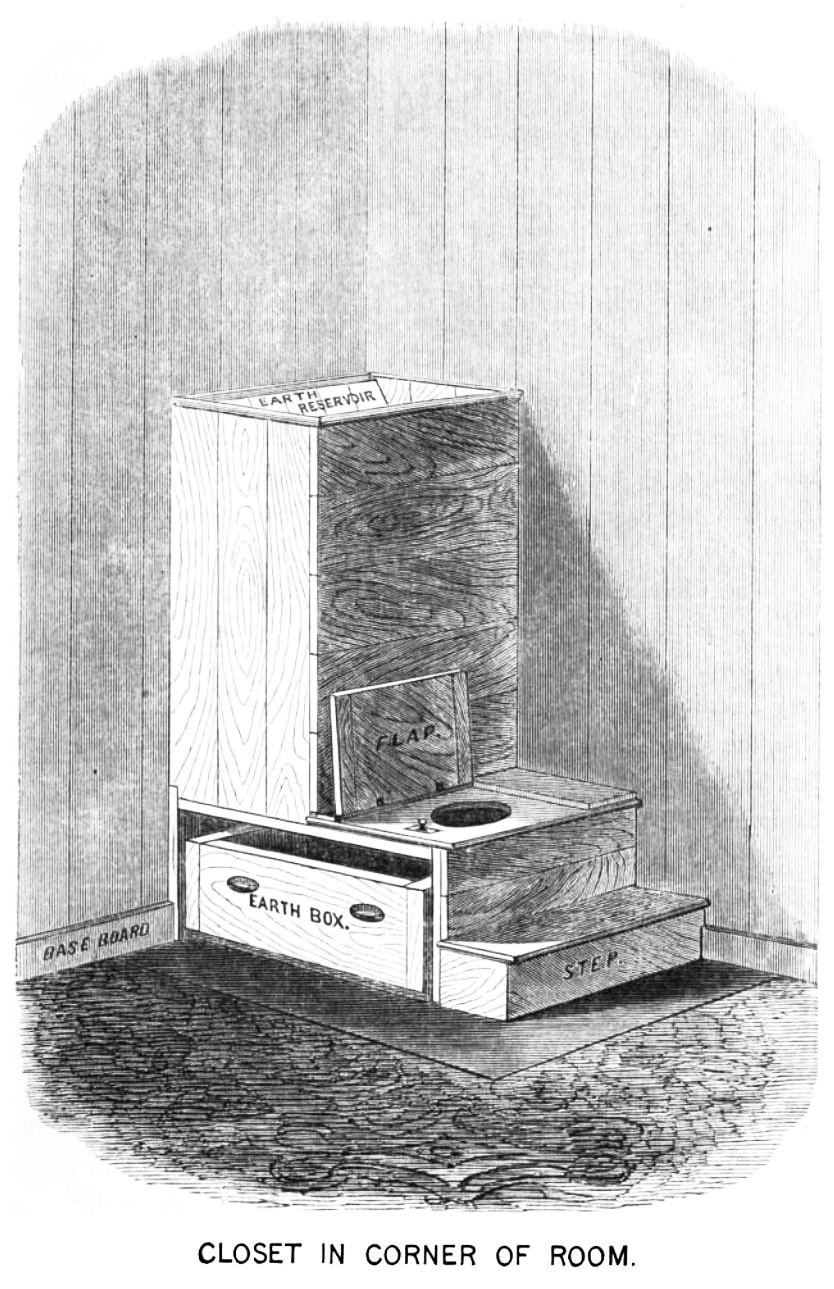
Alternative development paths
This review has focused on the history of the Western water closet and how it became the worldwide standard. Meanwhile, old, well-developed cultures like China and especially Japan have a long tradition of utilising human excrement. Japan has developed a well-organised system all the way from the 17th century into the 20th century.
At the start of the 17th century, when the Tokugawa shogunate was beginning its rule, fertiliser was seen as valuable barter. Farmers from around cities would bring vegetables into the city and trade them for human excrement. Later in the 17th and 18th centuries, the system was organised economically and faeces was assigned a more controlled exchange value. In 18th century Japan, night soil was so valuable in places like Tokyo (then Edo) that the faeces from twenty households was enough to provide a livelihood for one person. Faeces was seen to have true value as a resource and cannot be called “waste” in this context.
The system was so successful that even in the 1980s, many parts of Japan still had a thriving system of faeces collection by vacuum truck. Regrettably, development has since moved towards the Western standard, although some areas still retain the traditional solution.
Japan and the Western world have taken different paths. When comparing the European cities’ practice of sending toilet waste to the countryside and the advanced Japanese system, the key difference is the monetary value of human excrement. In Europe, human excrement was considered waste, the removal of which included a cost and may have been enforced by regulation. In Japan, excrement was a fertiliser resource with inherent monetary value purchased by farmers. This spurred the system’s development, and it could be said that the market fed itself.
Regardless, even Europe has a long history of using excrement as fertiliser. In the late 19th century, the first imported fertilisers like guano (seabird and bat excrement) and new chemical fertilisers developed into commercial products, reducing the demand and value of human excrement in farming.
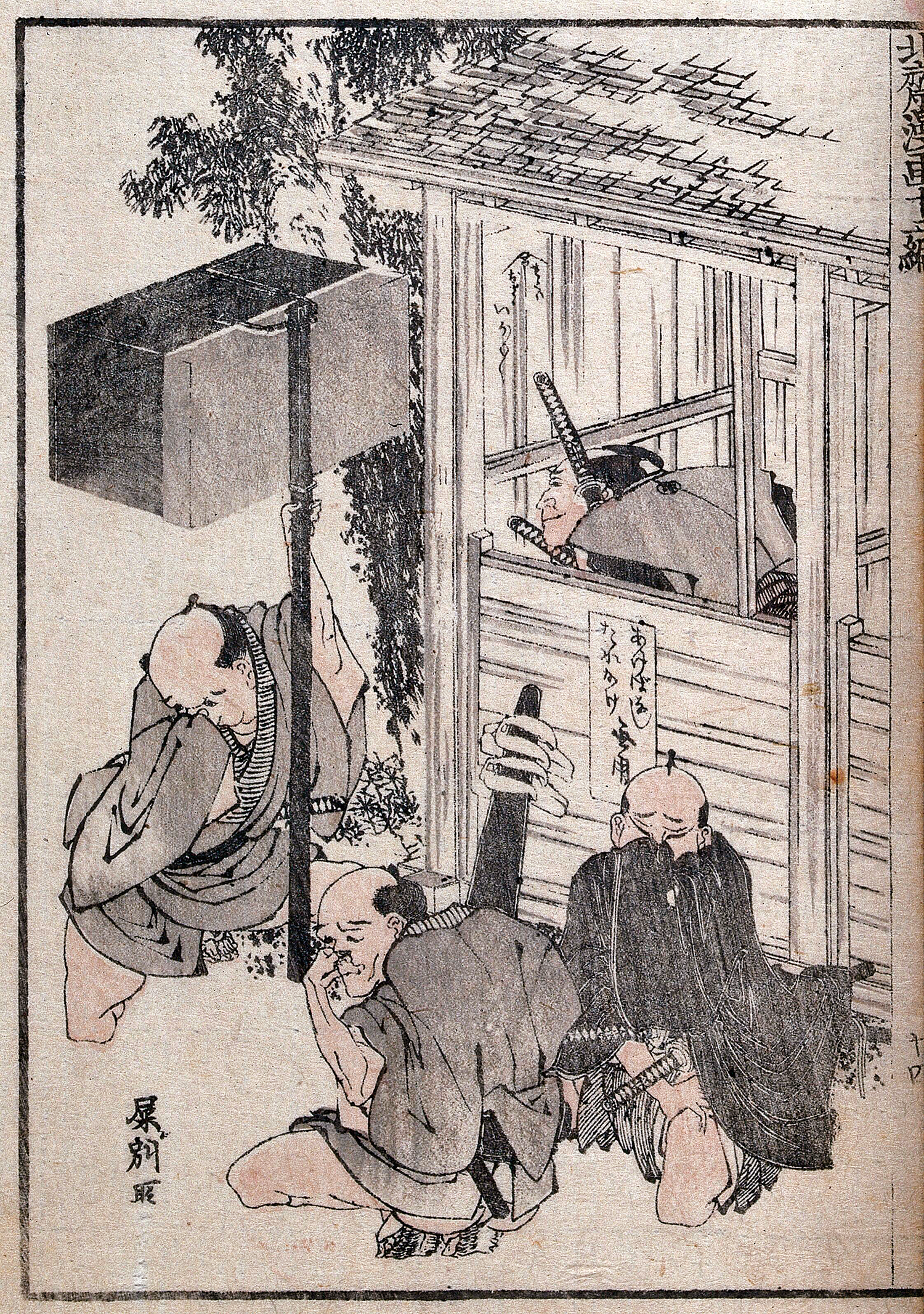
The late modern period and rapid population growth
Water and its transportation have always been valuable, except for the short period witnessed by our generations. For example, a cubic metre of water would cost two days’ wages in 18th century Paris. This slowed the development of the water closet, but in the course of the 19th century, the availability of affordable water supply and sewerage in cities led to the dry toilet system being seen as hopelessly laborious in comparison to the simple and clean water closet.
In the last two hundred years, the human population on Earth has grown nearly tenfold. In the 20th century, we gorged ourselves on water and fertilisers, as it were, and they have become valuable resources again. Rivers and groundwater are drying up at an alarming rate on all continents, and the careless use of chemical fertilisers has become a problem that even threatens the planet’s carrying capacity.
Even individual developments may have had far-reaching consequences. What if a water closet had been installed in the Palace of Versailles? It was certainly possible. In a society that worshipped the king and where social trends and manners were based on emulating the court, water closets would have quickly become popular. The water closet would have been a hundred years old by the time the Industrial Revolution gathered pace in the 18th century. How would a hundred years of experience of polluted waters have changed how we manage industrial waste? Would the role of human excrement as a fertiliser resource be more widely understood? What would be the worldwide toilet standard?
Today, roughly half of the world’s population has access to a flush toilet and that number keeps increasing. The problem for future water and food management has been understood, but the trend is difficult to stop or change.
Sanitation discourse then and now – how we lost the idea of natural recycling
The unnatural division into the dirty past and clean present clouds our understanding of today’s waste problem and puts more psychological distance between us and our waste. Cleanliness has been politicised. There is no question that water-based sanitation has been an enormous help in saving human lives. While excessive water use and the fertiliser question are now part of the discourse, the role of the flush toilet has not been challenged to any great degree. Why is that?
The water closet is a major political tool. As Waring wrote in the 1870s, the water closet became a status symbol envied by every “country cousin”. The same analogy applies in reverse: Water closets are hard to give up once achieved. Individuals would experience it as a lower standard of living. A departure from the norm is also easily seen as radical, even a protest, requiring social tolerance. It is interesting to observe counterparts where the paradigm shift has already taken place: For example, electric vehicles and veganism were marginalised for a long time, but political discourse and a change in values resulted in a surprisingly rapid transformation in the end. The same could be possible for water and fertiliser management, both of them vital and related to the current political topics of the environment and self-sufficiency.
Things interlink in the real world, and, historically speaking, it is easy to understand why the recycling of human excrement has been forgotten: chemical technology and sanitation developed simultaneously in the late 19th and early 20th century. The discovery of superphosphate in the 1840s and the Haber-Bosch process for synthetic ammonia in the early 20th century came alongside the rapid evolution of cities’ water services. More powerful fertilisers and effective sewer networks built to transport our mess made faeces-based fertilisers redundant. Excrement could be quickly and hygienically whisked out of sight and out of mind.
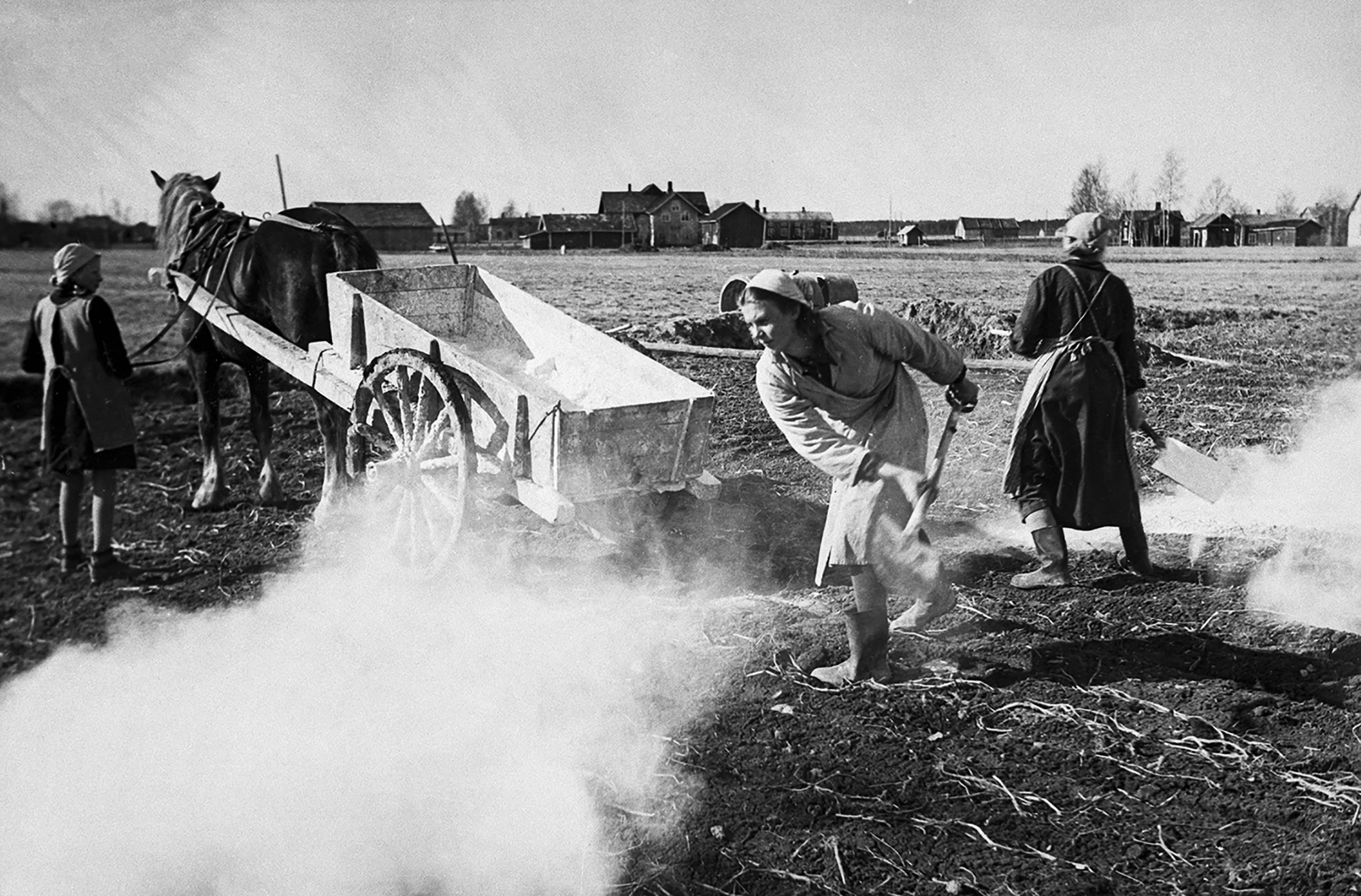
The taboo of human excrement
For the majority of human history, excrement has been a part of daily life and our approach has been natural, at most considering the smell to be a nuisance. As previously discussed, the European and American attitude to excrement was largely straightforward up until the 18th century. The same natural viewpoint survived in the countryside up to the 19th and 20th centuries.
Victorian morals made defaecation a totally private affair, and the faster the faeces and odours could be erased the better. Clean, shiny porcelain became the ideal for hygiene and moral standards, which it remains to this day. Therefore, the spread and final breakthrough of the flush toilet is linked to seeing faeces as taboo.
Clean drinking water and fertilisers are essential for good living. It is astonishing how limited the discourse about human excrement is to this day and how fundamental questions are systematically overlooked. The reason is the currently functional but unsustainable infrastructure and living taboos about excrement – it remains mostly a joke, even in serious contexts.
The article was first published in the book Death to the flushing toilet (Arvinius+Orfeus Publishing 2023), which accompanied the Pavilion of Finland’s exhibition Huussi – Imagining the future history of sanitation at the 18th International Architecture Exhibition of La Biennale di Venezia. The nearly sold-out book can be purchased via the publisher’s online store.
Architect Eero Renell is a member of the Huussi exhibition team, The Dry Collective. He is the co-owner of a Helsinki-based architecture firm von Boehm – Renell Architects Ltd. His main professional experience and interest lies in large scale public projects, particularly in schools and learning environment design. As an architect, he sees and seeks potential in the public processes and projects as an essential part of a better future. Eero graduated as an architect from Oulu University in Finland and gained a degree in architectural restoration at the Royal Institute of Art in Stockholm, Sweden.


